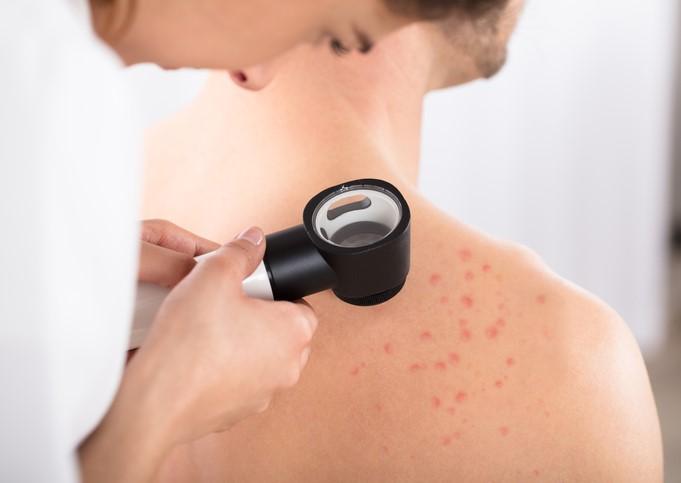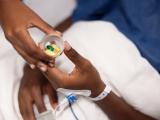Dermatologists have been identified as the most frequent prescribers of oral antibiotics in medicine, handing out more antibiotics per clinician than any other specialty. But a study today in JAMA Dermatology shows that antibiotic prescribing by the specialists has substantially decreased over the past decade.
The study, by researchers with the University of Pennsylvania Perelman School of Medicine and the US Centers for Disease Control and Prevention, found that oral antibiotic prescribing by dermatologists fell by 37% from 2008 through 2016. Much of the decrease, they report, has occurred in the extended courses of antibiotics that are typically prescribed for patients with acne and rosacea to lessen inflammation.
The researchers estimate that the decrease translates to nearly 480,000 fewer antibiotic courses being prescribed in 2016 than in 2008.
But within that good news there was a note of concern, as the researchers also found a nearly 70% increase in antibiotic prescribing by dermatologists to prevent infections after surgical procedures, even though the risk of infection resulting from dermatologic procedures is low and guidelines don't support prolonged antibiotic courses after surgery.
Fewer prescriptions for acne, rosacea
To characterize the temporal trends in the diagnoses associated with antibiotic prescribing by dermatologists, the researchers conducted a cross-sectional analysis using a large, nationally representative insurance claims database containing medical and pharmacy data and patient demographic information.
Course of antibiotics were characterized as extended duration (more than 28 days) and short duration (less than 28 days). The researchers linked antibiotic courses with the primary diagnosis from patients' most recent visit to a dermatologist.
The analysis found that, from 2008 through 2016, 985,866 courses of antibiotics were prescribed by 11,986 dermatologists, and overall prescribing decreased by 36.6%, from 3.36 courses per 100 visits to 2.13 courses per 100 visits. For courses of extended duration, most of which were associated with acne or rosacea, prescribing decreased by 53.1%, from 2.45 to 1.15 courses per 100 visits. Prescribing for acne declined by 28.1% (from 11.76 to 8.45 courses per visit), and prescribing for rosacea fell 18.1% (from 10.89 to 8.92 courses per visit).
The most commonly prescribed antibiotics for acne were doxycycline hyclate, minocycline, and extended-release minocycline. For rosacea, they were doxycycline hyclate, extended-release doxycycline, and minocycline.
The authors of the study say the substantial decline in antibiotic prescribing for acne and rosacea could be attributed in part to increased use of alternative treatments like spironolactone, a hormonal therapy that some dermatologists use to treat acne in women. They also suggest that, given the increased awareness of the complications associated with antibiotics, some patients may be opting against extended antibiotic therapy, which can last 3 to 4 months. Finally, guidelines published over the past decade have encouraged decreased antibiotic use in patients with acne and rosacea.
"Those factors combined may have been associated with this decreased utilization of oral antibiotics," lead study author John Barbieri, MD, a dermatologist with the UPenn Perelman School of Medicine, said in a JAMA Dermatology podcast.
Some increased prescribing
But when it came to short courses of antibiotics associated with surgical visits, skin- and other soft-tissue infections, and treatment for cysts, Barbieri and his colleagues found significant increases in prescribing. Oral antibiotic prescribing for surgical procedures rose from 3.92 to 6.65 courses per 100 visits (a 69.6% increase), while prescribing associated with cysts increased from 1.24 to 1.68 courses per 100 visits (a 35.5% increase). The most commonly prescribed antibiotics for surgical procedures were cephalexin and doxycycline hyclate, and the median course duration was 7 days.
Barbieri said this increase could mean more surgical visits by patients with higher risk for post-surgical infection, such as those going in for skin grafts or procedures in the groin or below the knee. But even for those higher-risk patients, a 2008 advisory on antibiotic prophylaxis in dermatologic surgery recommends only a single dose of perioperative antibiotics.
"It's still a concerning trend to see that there's such a dramatic increase in antibiotic use among this population, and it's an area where we need to assess if this use is optimal for patient outcomes," Barbieri said.
Barbieri and his colleagues suggest more research is needed to determine the appropriate role of perioperative and postoperative oral antibiotics for dermatologic procedures.
See also:
Jan 16 JAMA Dermatol study
























